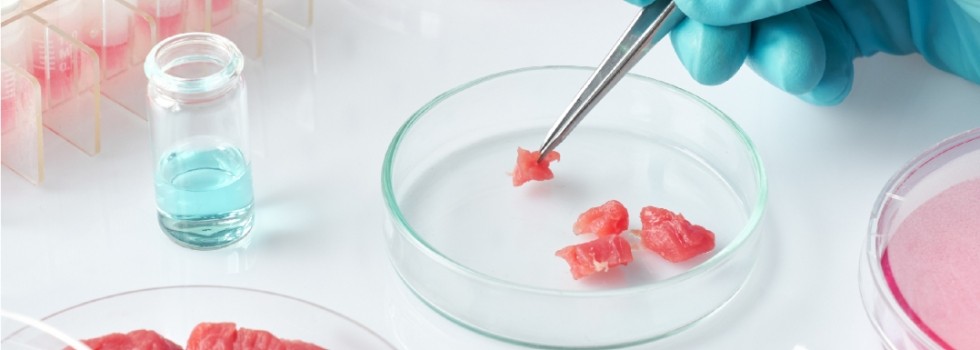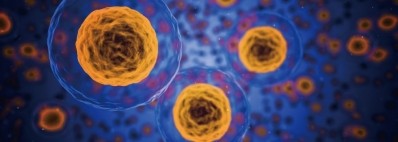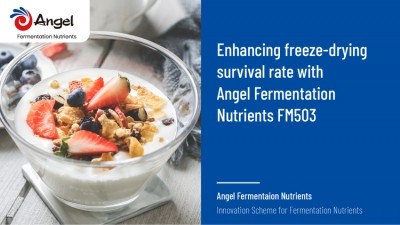Promotional Features
Cell-cultured meat: Can yeast-based protein hydrolysates target nutritional specificity?
Cell-cultured meat represents a transformative leap in the food industry, with the potential to revolutionise the production and consumption of animal protein.
Unlike traditional meat, which relies on raising and slaughtering animals, cell-cultured meat is produced by cultivating animal cells in a controlled environment. The shift towards cell-cultured meat is being driven by it being a more efficient approach to meat production, as it offers a streamlined process sidestepping many of the inefficiencies inherent in traditional farming.
By growing meat directly from animal cells, this method bypasses the need for land-intensive livestock farming, feed production, and the lengthy animal-rearing process. As a result, cell cultured-meat can be produced more quickly and with greater precision, allowing for the exact creation of desired meat cuts without the excess waste associated with whole animals.
This efficiency extends to resource use as well – culturing cells in controlled environments requires less water and energy compared to the demands of conventional meat production. Moreover, the ability to fine-tune the growing conditions means that meat can be produced with consistent quality and tailored nutritional profiles, addressing specific dietary needs or preferences.
This approach to meat production offers significant environmental benefits by using fewer resources and generating a smaller carbon footprint than traditional methods, which are linked to deforestation, greenhouse gas emissions, and excessive water use. This more sustainable approach also enhances food security by allowing meat production in diverse regions, reducing dependence on large-scale farms, and avoiding risks like livestock diseases and supply chain disruptions.
Cell-cultured meat: Refining the process
Cultured meat is produced through in vitro cultivation of animal stem cells, which is based on the mechanics of animal muscle growth and repair. The production process occurs over four stages:
- Phase 1: Cell Isolation Extract stem cells from a small sample of animal tissue, selecting those with high potential for growth and differentiation
- Phase 2: Large-Scale Cell Expansion Cultivate and proliferate the isolated cells in bioreactors filled with a nutrient-rich culture medium, rapidly increasing the cell count
- Phase 3: Tissue Maturation Guide the cells to differentiate into muscle, fat, and connective tissue, structuring them into three-dimensional forms that resemble natural meat
- Phase 4: Processing into a Food Product Harvest the matured tissue, refine its texture and flavour, and prepare it for use as a meat product in food
However, despite the advantages to cell-cultured meat, there are certain difficulties around its production. The major drawback is currently the cost of the manufacturing process, which has a minimum open cost far higher than farmed meat. Of this higher expense, the culture medium is the driver for this additional outlay, which makes the search for a way to lower this crucial for the long-term future of cultured meat.
Part of the effort to reduce this cost is being led by a search for serum-free media. Fetal bovine serum is an expensive part of the process, accounting for a large portion of the total cost of the medium. Beyond this, the serum contains complex components, potentially including substances such as antibiotics, disease, and microorganisms.
The batch-to-batch variation that occurs also makes it difficult to control the continuous culture process. To ensure the future of cultured meat, a reduction in cost and the improvement of quality controls will be needed to make industrialised mass cultivation possible.
Yeast-based protein hydrolysates: Advanced solutions
The use of serum-free media also introduces complex challenges, which need to be navigated in turn. The main issues are the potential for nutrient deficiency, cell growth and viability, and lack of reproducibility and scalability, among other disadvantages.
Advancements in the development of protein hydrolysates can provide a solution to some of the issues posed by producing cultured meat at an industrial scale. Protein hydrolysates are a nutritionally rich product. Protein hydrolysates contain amino acids and peptides, carbohydrates, such as mannose and fructose, mineral elements, including selenium and zinc, and additional vitamins.
With yeast-based protein hydrolysate, the targeted breeding of yeast with nutritional specificity is possible. This is based on the synergistic hydrolysis technology of endogenous and exogenous enzymes and membrane separation technology, which allows for the efficient release, degradation, and enrichment of nutrients.
With plant-based protein hydrolysate, the product can provide varying amino acid profiles depending on the plant source, allowing for a supply of essential amino acids to be delivered for protein synthesis and cell growth. This form of protein hydrolysate can also provide bioactive peptides and certain vitamins and minerals.
An important factor for producers looking to manufacture cell-cultured meat at scale is the quality requirements, and the use of protein hydrolysate is suitable in this regard. The product features high solubility, low endotoxin levels, high filtration performance and high stability.
These elements combine to make protein hydrolysates effective for use alongside fetal bovine serum in the cell culture medium, allowing for the partial replacement of the serum and cell growth factors. This provides an important advantage, which is the ability to reduce the overall cost of culture media, making the process more economically viable on a larger scale.
Selecting a partner to work with on the supply of protein hydrolysates is crucial because of its importance in the process for cultured meat. Angel Yeast has been working on the development of yeast biotechnology since its establishment nearly 40 years ago. Through this experience, Angel Yeast has independently developed various production processes to create a range of yeast- and plant-based protein hydrolysates with diverse nutritional characteristics.
Importantly, the protein hydrolysates have been developed based on customer feedback and their specific requirements. Behind this work are numerous experiments that support Angel Yeast’s ability to provide products that are able to provide the necessary nutrients for cell growth and proliferation.





